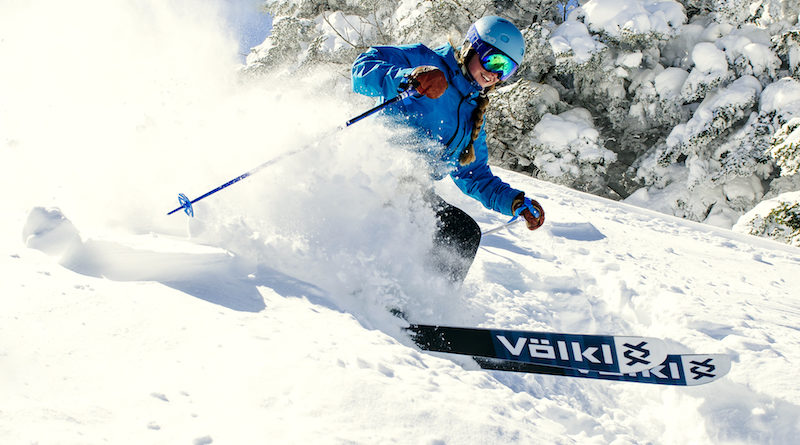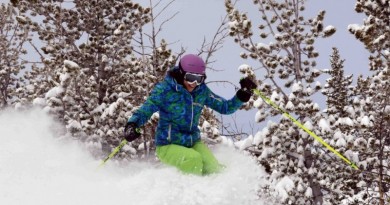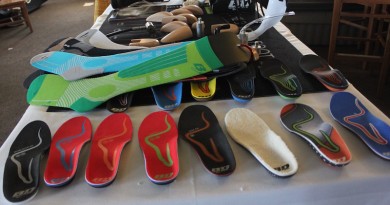Get Off the Groomed: 5 Tips for Skiing Fresh Snow
One of the joys of spring skiing is finding deep pockets of snow just off the trail or in the woods. Here are five tips to help you become an Eastern powder hound.
The ungroomed run is where your versatility gets tested: your skiing either comes together and you feel like a hero, or it’s a series of linked recoveries that remind you there is more to learn. Getting your skis to perform with precision on ungroomed, natural snow is the essence of good recreational skiing. Here, Doug Stewart, a PSIA examiner, instructor at Stowe and boot expert at Skirack in Burlington, offers some pointers for what to do when you get off the groomed.
1. PICK YOUR LINE
When skiing natural terrain, looking where you are going is super important. Don’t be tempted to look at the trees, or rocks or other fun features; keep your focus on the snow you are going to ski and pick your line. Look at the spaces, not the obstacles. Also, use your goggles to keep your eyeballs safe and opt for a lens that will adjust to the light, because usually if you duck into the trees, you’ll be in shadow.
2. KEEP THE BASKETS, LOSE THE STRAPS
Having poles in the woods is very helpful, but sometimes you might need to let them go. When the mountain knocks you off your game, which will happen at some point, it’s a good idea to not go down with the poles attached (as skier Caroline Kessler, here, has them). Sometimes a pole basket can also get caught on a piece of nature and it’s nice to let the pole go and keep your arm and shoulder. Either ski without your strap around your wrist or use a pole with a break-away strap.
3. PUT YOUR FEET ON THE SAME PAGE
While racing down a groomer, we get the feet apart and really drive the power to the outside leg. Sometimes we might drive as much as 90-percent of our weight to the outside ski, so we are skiing 90/10. When skiing bumps or powder or trees, we need to keep the feet more under the body, closer to each other, and not let our weight go quite so heavily to the outside foot. Think about being more 60/40 off trail, with a stance that is about hip width. This helps the two skis work a little more as one. It will also make your skiing less edgy. On ungroomed snow, think about keeping the skis flatter and not letting them roll up on edge as high as they do on groomers.
4. SKI DOWN, NOT ACROSS
The temptation when you get into heavier snow or trees is to slow down and hunt and peck for places where you can make wider turns. When skiing in ungroomed snow, there is more resistance, so we can let the turns out a little, and let the skis stay closer to the fall line a little longer in our turns. This straighter turn will add continuity and a little speed, which is helpful to break through the snow. Before heading down a run, look at the terrain and think how water might flow down it. Then consider that line and try to follow it.
5. GET THE RIGHT TOOLS ON YOUR FEET
Modern skis have been carving turns on firm groomers well for a number of years, but more recent innovations have really changed how skis deal with natural snow. The addition of some width, and more importantly, rocker and changes in side cut, have made skis from the last four or five years much easier to handle on ungroomed terrain. Rocker, or reverse camber (meaning when the ski is flat on the snow, the tips and tails of the skis are slightly higher off the snow) helps the tips float more in deeper snow and makes it easier to initiate a turn. Super-fat skis and big rocker have been dialed back in the past few years. You don’t need a super fat ski but if you want to improve your off-piste skiing, get on a modern ski that is designed for natural terrain and has a minimum waist width underfoot of 95-mm. You will also find that having a little softer flexing boot will add to your ability to stay balanced over your skis when skiing terrain that’s variable.



